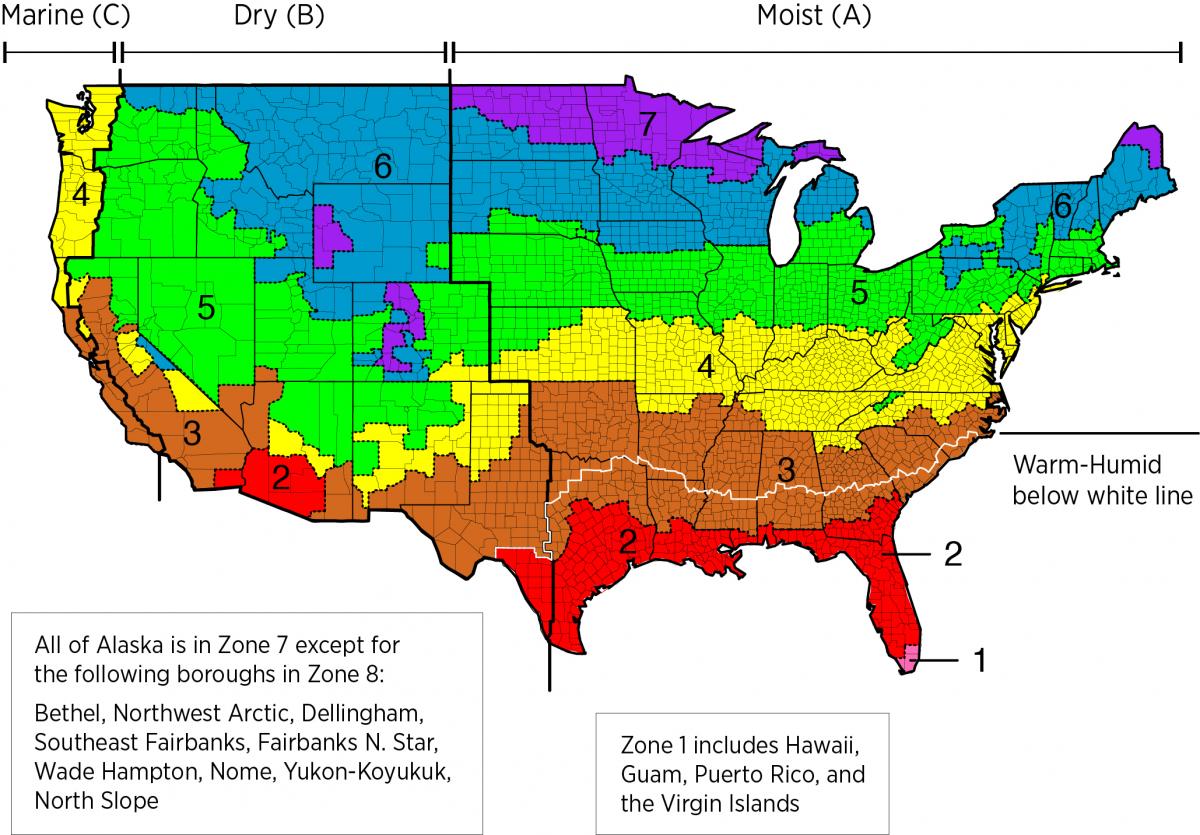DOE Zero Energy Ready Home (Revision 07)
Exhibit 2 DOE Zero Energy Ready Home Target Home.
The U.S. Department of Energy’s Zero Energy Ready Home program allows builders to choose a prescriptive or performance path. The DOE Zero Energy Ready Home prescriptive path requires builders to meet or exceed the minimum HVAC efficiencies listed in Exhibit 2 of the National Program Requirements (Rev 07), as shown below. The DOE Zero Energy Ready Home performance path allows builders to select a custom combination of measures for each home that is equivalent in performance to the minimum HERS index of a modeled target home that meets the requirements of Exhibit 2 as well as the mandatory requirements of Zero Energy Ready Home Exhibit 1.
Table 1 shows the minimum exhaust fan efficacy requirements in cubic feet per minute per Watt for ASHRAE 62.2-compliant ventilation in the hot, mixed, and cold climates.

The whole-house mechanical ventilation system can be designed to meet the ventilation requirements in one of several ways (DOE 2012): supply-only ventilation, exhaust-only ventilation, balanced ventilation with a heat recovery ventilator (HRV) or energy recovery ventilator (ERV), or intermittently balanced using a combination of timered exhaust fans and supply ventilation using fresh air intake ducts that are attached to the central air handler or equipped with their own fan.
For more information about whole-house ventilation options, see the guide Whole-Building Delivered Ventilation, which describes exhaust, supply, and balanced ventilation strategies.
How to Determine Fan Efficacy
The efficacy of the fans included in the whole-house ventilation system must be verified. Verifying the fan efficacy depends on the information available. The cfm/W may be listed on the specification sheet for the fan. If multiple values are listed, choose the airflow (cfm) shown on the mechanical plans and 0.1 in. of static pressure (in. w.c.). If efficacy is not listed, it can be calculated from published watts and specified airflow (cfm). For example, a fan with an airflow of 80 cfm at 0.100 in. w.c. and a wattage of 48 W has an efficacy of (80÷48=) 1.67 cfm/W. If the wattage is not specified, it can be calculated from the fan voltage and amperage. (To calculate watts, multiply volts times amps times an assumed power factor for the fan motor (for example 0.75PF). Also see Continuous Supply/Exhaust Fan Ratings.
Climate zones are based on the Climate Zone Map found in the 2015 International Energy Conservation Code (2015 IECC Figure R301.1):
